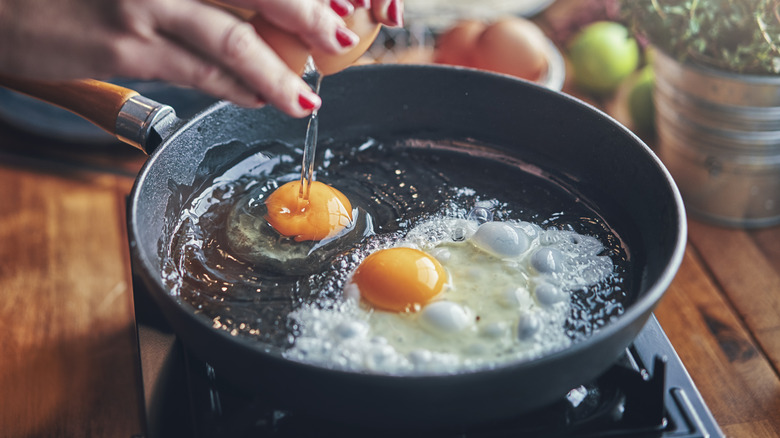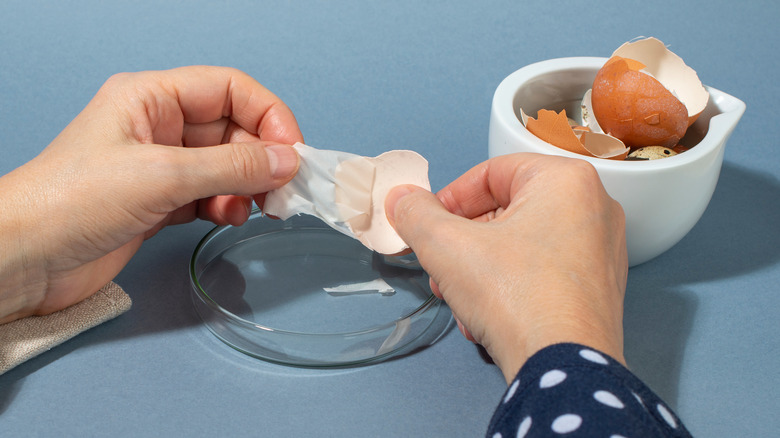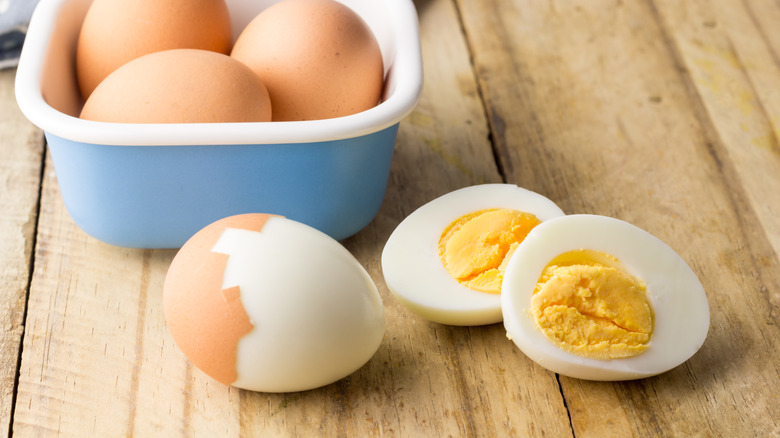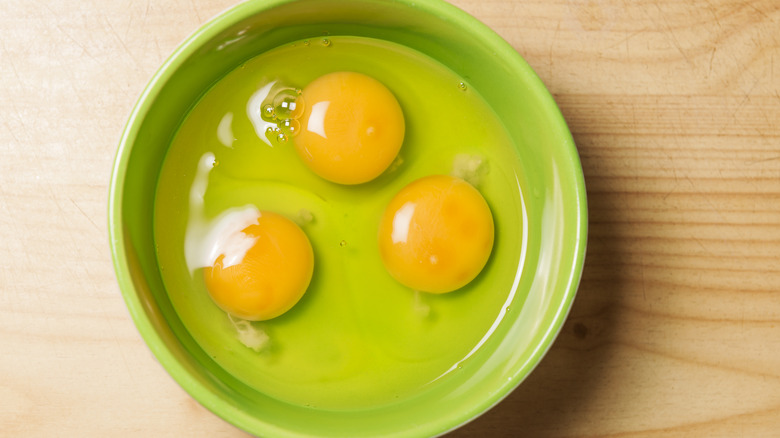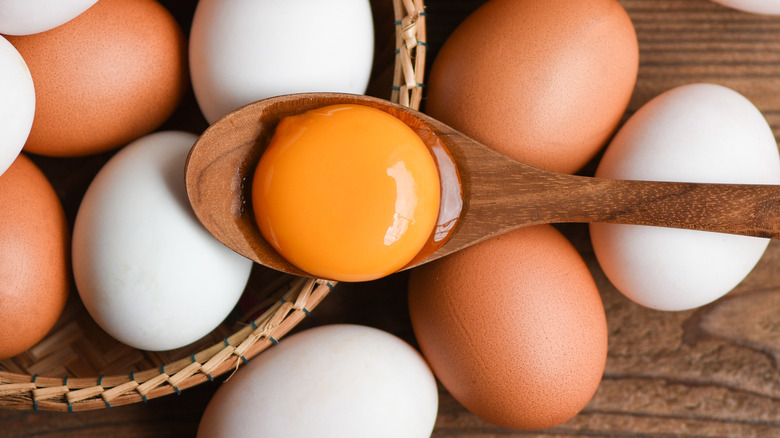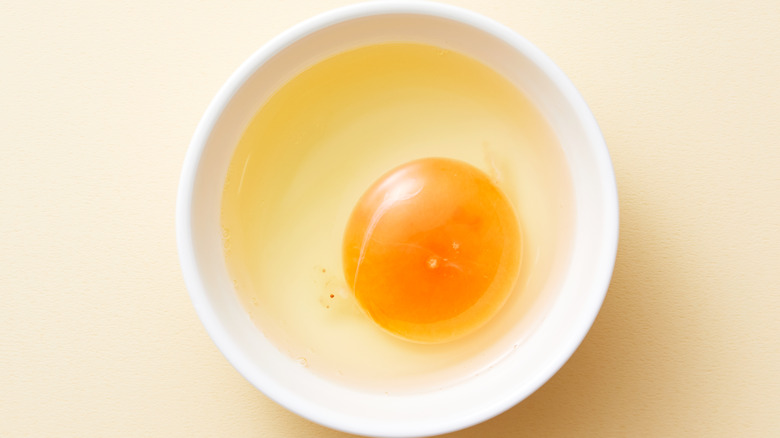5 Parts Of An Egg You Haven't Heard Of Before
The humble little egg doesn't seem like a very complicated food. We know it's laid by chickens, it's the gold standard of protein, and it tastes good. We know it's something we can find at any grocery store and easily whip up for breakfast any day of the week. And surely we know what makes up an egg: the shell, the egg white (also known as the albumen), and the yolk ... right? Not exactly.
The anatomy of an egg involves so much more than the three main parts you can see (or taste). So yes, the shell, the egg white, and the yolk make up three parts of the whole — but that whole contains five other important parts that you've likely never heard of before.
Allow us to introduce you to the inner and outer membranes, the air cell, the chalazae, the vitelline membrane, and the germinal disc. Most of these unknown parts affect the ultimate texture of the egg in some way. So let's crack 'em open and find out what they all mean.
The inner and outer membrane
The membrane of an egg, which is the outermost part just inside the shell, consists of two layers: an inner and an outer. Both membranes are translucent, gel-like barriers made of proteins that shield the rest of the egg, protecting it from bacteria and allowing it to ventilate gaseous particles. The outer membrane is attached to the inside of the shell while the inner membrane encloses the entire albumen (aka, egg white). These membranes are thin and barely recognizable, but extremely strong and crucial to the egg's overall health.
The air cell
In between the inner and outer membrane is the egg's air cell, which is essentially a collection of air bubbles that form as a result of an egg's cooling process. As a fresh egg (which is hot when laid) cools, it releases moisture while bringing in oxygen, and an air cell develops. This is the little divot or pocket underneath the shell that you often see at the bottom of an egg. Typically, the older an egg is, the larger its air cell will be — which explains the reason behind this helpful hard-boiled egg trick — choose older eggs when boiling because they are easier to peel. Air cells generally help keep the egg's internal environment in good condition, and they can affect an egg's shelf life.
The chalazae
You've probably cracked open an egg and noticed what looks like a white wavy string attached to the yolk — that's the chalazae. These are two fibrous (and completely edible) ropes that run through the egg's yolk and essentially anchor it in place on either end; it's almost like an umbilical cord that supplies the yolk with the support it needs. The fresher the egg, the more prominent and stringy the chalazae will be, as it tends to fade over time and becomes harder to distinguish from the egg white.
The vitelline membrane
Just like the protective membranes that surround the whole egg, the vitelline membrane is a shield that surrounds the yolk itself. It's also made up of two (microscopic) layers which are meant to keep the yolk centered and protect it from cracking inside the egg, which would be detrimental to its health. This membrane is also what contributes to the shininess of the yolk, and like the chalazae, it tends to weaken and dull as the egg ages.
The germinal disc
Probably the least known and least spotted of all, the germinal disc is a tiny, nearly imperceptible white dot within the yolk. This is where the egg would be fertilized, and where an embryo would begin to form. In a fertilized egg, the spot is the source of both the female's and male's cells, appearing a little larger and more clear in color. In an unfertilized egg, it's a very small white spot that contains only the female's genetic material. If the germinal disc looks more like a circle with a transparent (yellow) center, then it's likely been fertilized. Unfertilized germ spots are solid white.

